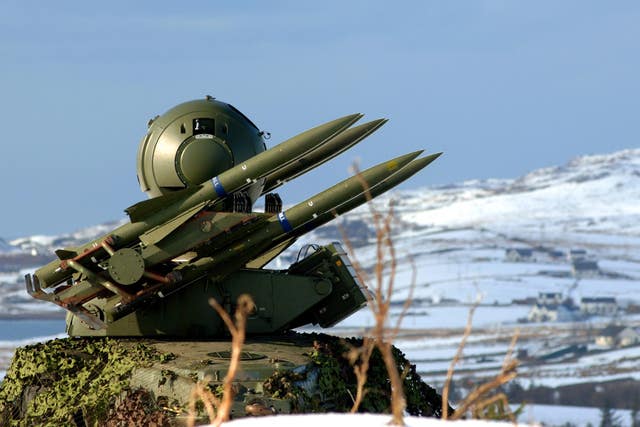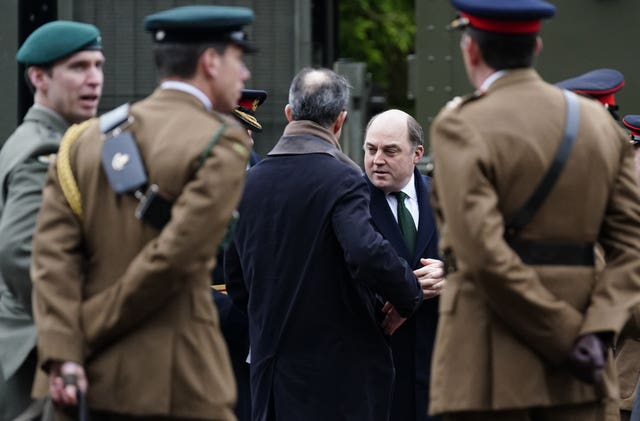New Sky Sabre air defence missile system unveiled by Army
The Rapier missile system has been retired after 50 years of service.

The Army has unveiled a new air defence missile system “capable of responding to 21st century threats” such as the crisis developing on the borders of Ukraine.
The 16 Regiment Royal Artillery held a ceremony to retire the Rapier missile system after 50 years of service as they are replaced by the Sky Sabre air defence system.
The event, attended by Defence Secretary Ben Wallace and deputy chief general staff Lieutenant General Sir Chris Tickell, was held for the regiment to receive its new colours which are normally flags used to identify the unit but, for this artillery regiment, its air defence missiles take up the role of the colours.
The Rapier system was used in service from Kuwait to the Falklands war but was also visibly deployed to several London parks to provide to combat any security threats during the 2012 Olympics.
The new Common Anti-Air Modular Missile (CAMM) used by the Sky Sabre has three times the range of the Rapier and can reach speeds of 2,300mph and can target fighter aircraft, drones and laser-guided smart bombs.
The system’s Giraffe Agile Multi Beam 3D medium-range surveillance radar can cover 360 degrees to a range of 120km.

He told the PA news agency: “It’s designed to take on threats from the 21st century and if we are asked to deploy to other areas then we are ready to do so.
“Our men and women are absolutely operationally experienced wherever we have deployed with Rapier and are ready and able, having done the conversion courses to this very complicated and new 21st century weapons system to take on the next challenge or war or whatever comes our way.”
He explained that a key improvement with the Sky Sabre system was being able to communicate directly with other areas of the armed forces.

“This kit means we can talk to a F35 and the carrier strike group to be able to communicate what we see on our radars and they can share with us so we can inform our decisions to make fast, effective and lethal engagements.
“This is absolutely a step change for 16 Regiment and the Royal Artillery and the Army.
“We have gone from an industrial air defence system with a standalone capability which didn’t communicate to other things but would defend a particular area, to now communicating with our other services, the air force and the navy to be able to share information and engage in a way we haven’t done before.”





